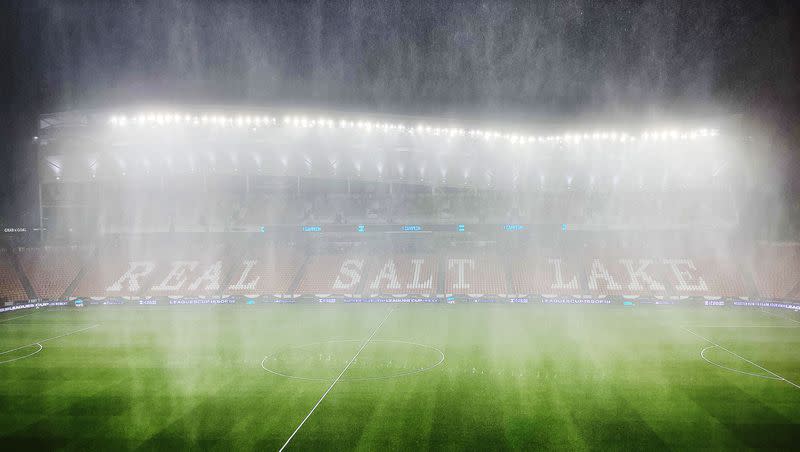Flash floods and Utah’s summer monsoon season pose sudden threats

Alex DeSmet still remembers the vivid images of someone swimming out of the first floor of an apartment complex in the Cedar City area in a sudden flood, trying desperately to keep a cat’s head above water.
That’s what can happen in a flash flood. The weather can remind us every so often that we’re not in charge, the elements are.
When normal numbers change
DeSmet said on average since 1986, Utah issues about 56 flash flood warnings per year, but stressed the caveat that the recent upward trends stem from a number of changing factors.
DeSmet, a meteorologist with the National Weather Service in Salt Lake City, said the tools to predict the potential for flash floods have greatly improved over the years thanks to more precise weather detection systems, cellphone images and even the increased number of people recreating in danger-prone areas and sounding an alert.
So far to date this year, the National Weather Service in Salt Lake City has issued 61 flash flood warnings, but that number will tick up as the monsoon season continues into the coming months.
Flash flooding forced the closure of a road in Capitol Reef National Park and severe and sudden thunderstorms at a popular hiking trail in Bryce Canyon were mentioned in a press release on the death of an Arizona woman. Her official cause of death has not been released.
Two men’s bodies were recovered in May after flooding in a popular slot canyon in the Kane County area. Over the years, these raging events continue to inflict tragedy.
Related
Last year, there were 98 flash flood warnings by this time. In 2021, that number had jumped to 125 at this date, but by the conclusion of the season it topped out at 137 flash flood warnings. In 2022, it finished at 126 for the entire year, DeSmet said.
The years 2019 and 2020 were poor performers, with a near non-existent monsoonal season, with only 13 flash flood warnings issued for 2019 by this date and 21 for 2020.
DeSmet said this year has been tracking just above normal. Localized flooding from snowmelt might cause some Utah residents to disagree that this year has been normal, since there have been landslides that wiped out homes and standing water that drowned cattle.
Related
As far as monsoonal activity, it may have got off to a late start, but it is behaving in its typical late summer fashion, delivering lightning shows and sporadic thunderstorms that leave some areas drenched and others dry.
Overall, August so far has delivered well above traditional precipitation for most areas of the state, especially in the northwestern region. The Cache Valley area has received 300 to 400% above normal precipitation, with Corinne getting hit even harder.
Salt Lake City has had 2.75 inches dumped on it so far this month, the fourth most since record keeping began in 1874. For St. George, it ranks at 14th most since its records began in 1893 with the receipt of 1.75 inches.
DeSmet said documentation did not begin in Cedar City until 1948, but the eastern portion of that area has received 2.47 inches of rain, also landing in the fourth spot for most precipitation. The only areas to get shorted for rain during that time period are the Blanding and Monticello region.
“Everybody else has had above precipitation so far this month,” he said.
This week’s forecast calls for the heat to return early on with bone-dry conditions in northern Utah. By Thursday, thunderstorm activity could reach southern Utah and is predicted to increase over northern Utah over the weekend.

